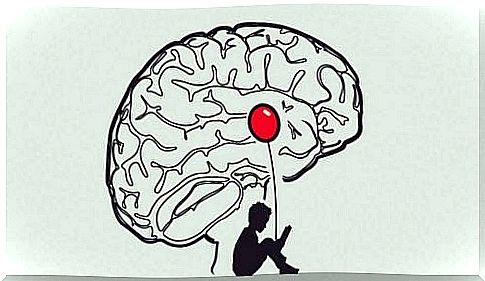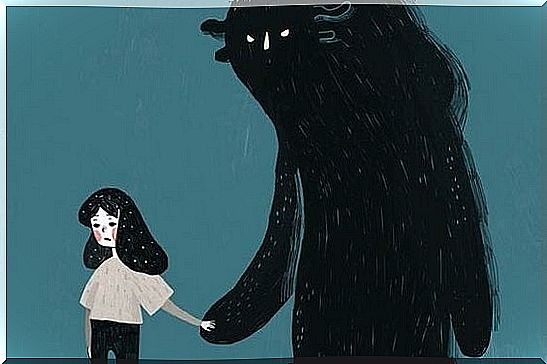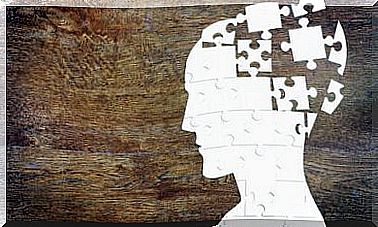The Anatomy Of Fear: Physiological And Psychological Basis

Thomas Hobbes said that the day he was born, his mother gave birth to twins: he and his fear. Few emotions characterize us as this stubborn and recurring feeling that not only guarantees our survival, it also deprives us of many opportunities, limiting our freedom and our personal growth.
Fear is an annoying and paralyzing feeling, we are all aware of it. It is true, however, that eliminating it entirely from one’s life would be like leaving the doors and windows of one’s home wide open, like walking barefoot on a path of sharp stones. An excessive risk that would have a negative impact on one’s balance and way of life.
Contrary to popular belief, truly brave and daring people don’t just remove this emotion from their minds. The fear is always there, it is a question of knowing how to manage it, handle it, turn it in one’s favor.
Alfred Hitchcock – as a “master” of fear – often said that nothing is more pleasant than “controlled fear”. Many of the spectators who go to the cinema do so with the sole purpose of feeling fear, anguish, terror. The mere fact of knowing each other in a safe context, in a room from which you will come out “unharmed” a little later, relaxed and in the company of your partner or friends, helps to create a stimulating feeling of well-being.
Claiming that fear is necessary and healthy is far from nonsense. If you can manage to keep it under control, it will prove to be very beneficial. The opposite case, on the other hand, is a problem, when fear takes over the rest, triggering a storm of chemical and physiological reactions.
These are those moments in which we let the most acute stress, as well as panic attacks and all the resulting emotional “kidnapping” mechanism, have won over the rest, making us become victims of a series of complex and interesting processes…

Physiological basis of fear: the seizure of the amygdala
Elena was in a car accident 6 months ago while driving her daughter to school. They both came out unscathed, but the memory of the story and the psychological impact caused by the accident are still an open wound that still negatively affects his life.
Sometimes even the creak produced by the bottle of water on her bedside table causes her to wake up with a start in the middle of the night, reminding her of the crash she had with another vehicle. Elena still hasn’t been able to drive the car again. Only by sitting in the passenger compartment and placing her hands on the steering wheel does her heart start beating wildly, she feels a strong sense of nausea and the world around her begins to spin.
As we read this invented but recurring story among those who have been victims of a car accident, we realize that Elena, or anyone in her place, will need help sooner or later. To understand the origin of our fears and phobias, it is not enough to understand where they come from. It is necessary to get in touch with the anatomy of our brain.

The oldest area of the brain
All the information we perceive through the senses passes through the amygdala, a very small structure of our limbic system which is, in turn, the oldest area of the brain, governed exclusively by emotions. The amygdala monitors everything that happens inside and outside of us, and when it senses a possible threat, it activates a series of connections to generate a set of complex reactions.
Its “alarm” system immediately alerts the nervous system to set in motion a concrete response: escape, in which the whole organism collaborates.
- There will be an increase in blood pressure, an intensification of cellular metabolism, an increase in blood glucose and blood clotting, an increase in mental activity.
- At the same time, much of the blood will flow to the main muscles, such as the legs, so that they have enough energy to escape if necessary.
- Adrenaline spreads throughout the body, to the point of temporarily blocking the action of the immune system, which in this situation the brain does not consider essential. Instead, it is necessary to be ready to flee or, alternatively, to prepare for the fight.
Clearly, this succession of physiological and chemical alterations would help us in the event of a real threat, so that we can escape from an objective danger. When fear is psychological and intangible, as for Elena who associates any sudden sound with the memory of her accident triggering an immediate panic response, we can only imagine what it means to live continuously and for a long time with these reactions.
The psychology of fear and the importance of knowing how to manage it
If there is a truly exhausting situation for the human being, it is undoubtedly pathological fear. It includes various alterations, including generalized anxiety, unmotivated and permanent sense of oppression, phobias, hypochondria or obsessive-compulsive disorders … There are various “shades” of fear, as there are various shades that go from gray to the deepest black: shades in which the person goes from losing the ability to control his emotions to losing his dignity.
Here are some strategies that can be effective for fighting your inner fears.

5 ways to stem our fears
In order for fear to affect us only in a positive way, we must keep in mind 5 tips:
- We are not our fear: let’s identify our fears, let’s not condemn them to silence and secrecy. We call our fears by name.
- We declare “war” on our fears. Let’s try to understand that they have invaded our intimacy; we take an active attitude towards them that makes us regain control of our life.
- We learn about our fears, we find out why they are there. We must remember that fears respond to external and internal factors: surely there will be a subjective component in them, but also an external one that annoys us, that makes us lose our calm and courage …
- Let’s stop feeding them: if we empower our fears, they will eventually conquer us. Rather, we try to rationalize the panic by using the support of breathing techniques or physical exercise, we try to distract the mind to keep it at bay and keep it away.
- Let’s talk as if we were our own coaches: let’s start talking to ourselves, just like a coach would do , we design strategies to eliminate behaviors that limit us, give ourselves strength to achieve small daily goals, congratulate ourselves when they let us reach out and remember that it is a constant work.
The theme of fear is undoubtedly broad and complex, but it is a field that is worth exploring in order to take better care of ourselves. Because, as they say, to aspire to true happiness, one must first overcome the boundaries of fear.
Bibliography
André, Cristoph, Who is afraid of fear. Corbaccio
Hütler, Gerald “Biology of Fear. How Stress turns into Emotions “
Gower, L. Paul “Psychology of fear”: Nova Biomedical Books









